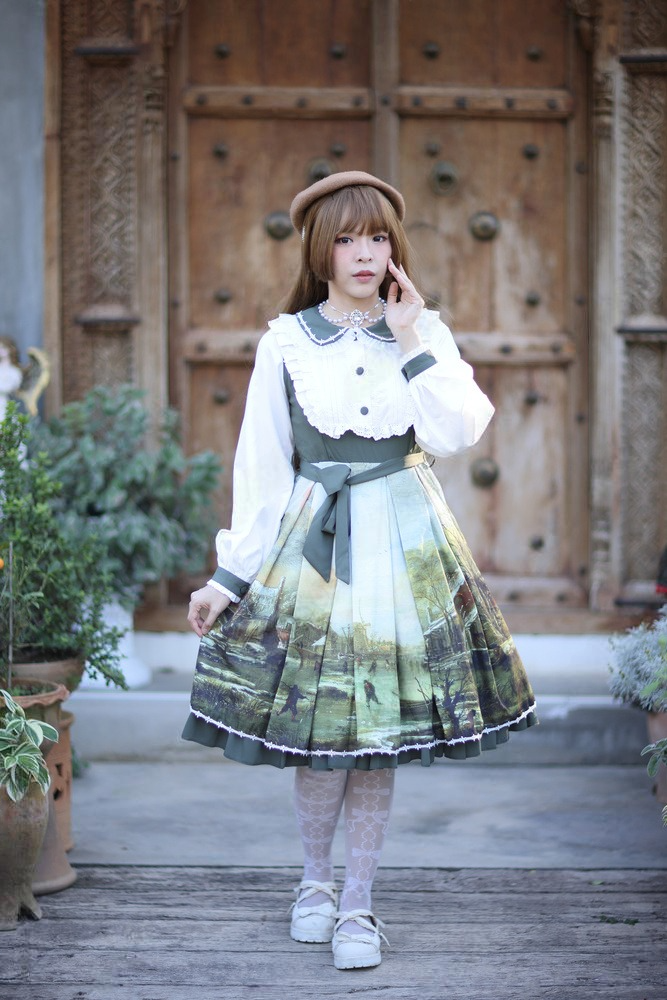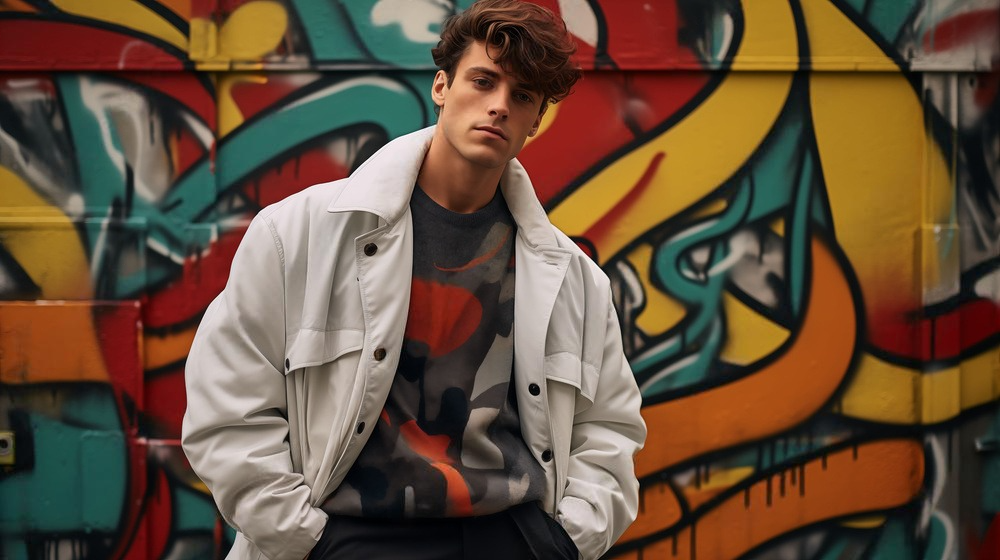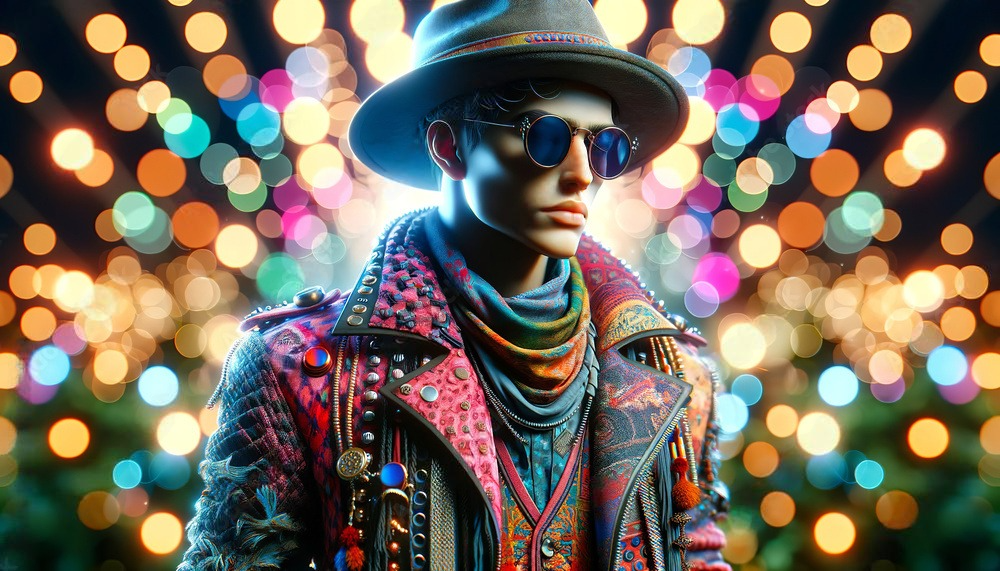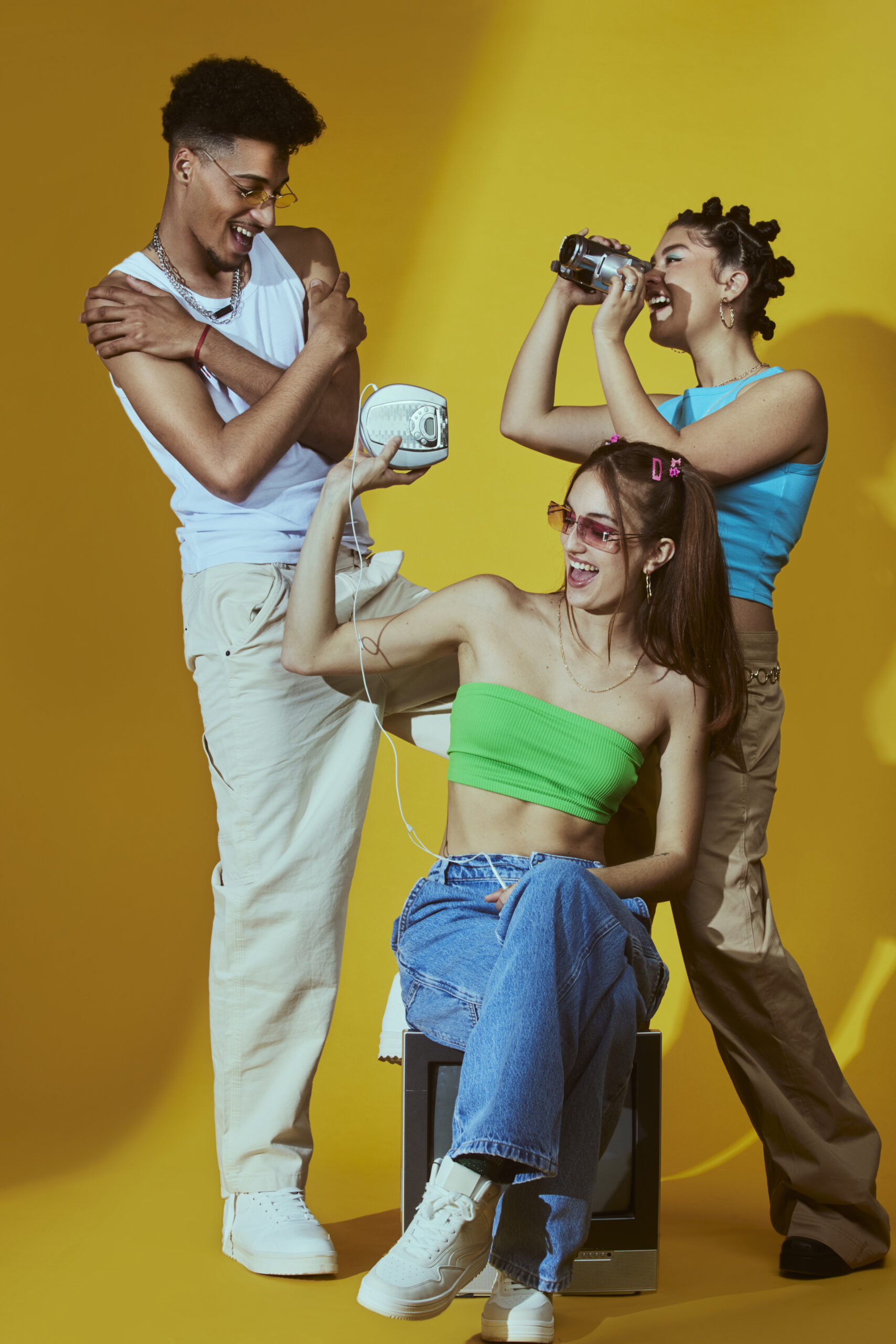Lolita fashion is a unique and captivating style that has captured the hearts of fashion enthusiasts around the world. Originating in Japan, Lolita fashion is characterized by its Victorian and Rococo-inspired clothing, often featuring intricate lace, ruffles, and delicate accessories.
In the prior piece titled “Lolita Fashion Style Breakthrough 101: Unveiling the Enigmatic,” we delved into an extensive understanding of what constitutes Lolita fashion, its roots, historical progression, and subcultural variations. This article is the continuation of the previous article focusing on influential figures and brands within the Lolita fashion scene, the global adoption of this style, the hurdles associated with embracing it, strategies for preserving its authenticity, as well as contemplating the future direction of Lolita fashion.
Table of Contents
Debunking Myths: Exploring the Truth Behind Lolita Fashion Style
The fashion style Lolita, rooted in Japanese subculture, has gained global recognition and admiration over the years. However, along with its popularity comes a slew of misconceptions that often overshadow its true essence. In this comprehensive guide, we’ll delve into some of the most common misconceptions about Lolita fashion and shed light on the reality behind this unique and diverse style movement.
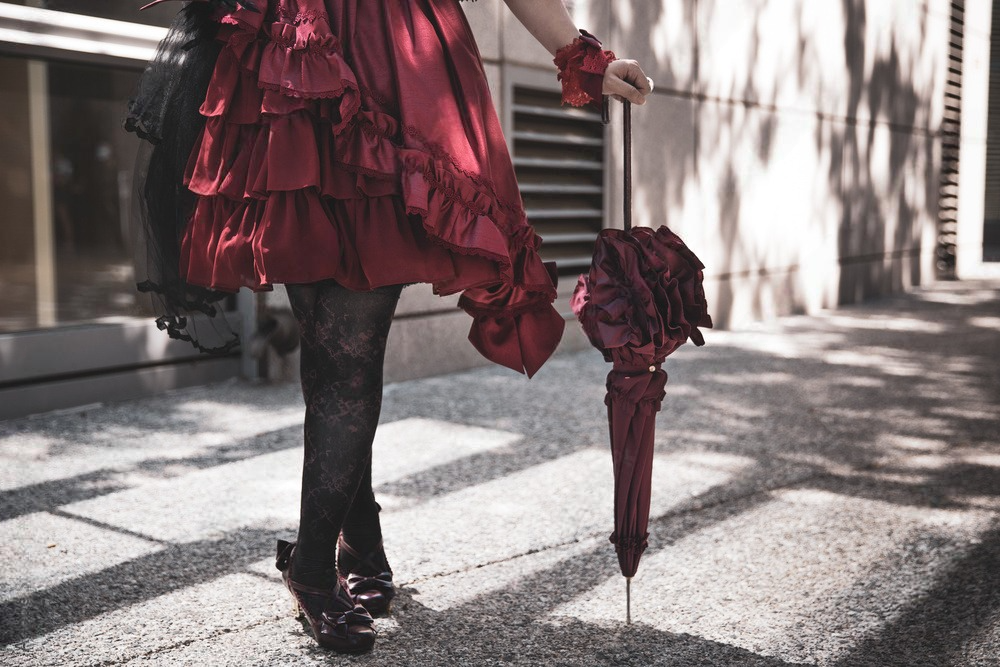
Misconception 1: Lolita Fashion is Fetish Wear
One of the most prevalent misconceptions about Lolita’s fashion style is that it is associated with fetishism. Contrary to this belief, Lolita fashion is primarily focused on modesty, elegance, and vintage-inspired aesthetics. The intricate lace, frills, and doll-like elements are meant to evoke a sense of whimsy and nostalgia rather than serve as fetishistic attire.
Misconception 2: Lolita Fashion is Only for Young Girls
Another common misconception is that Lolita’s style is exclusively for young girls. While it’s true that many enthusiasts discover and embrace the style during their youth, there is no age limit when it comes to enjoying and wearing Lolita fashion. People of all ages, from teenagers to mature adults, can be seen rocking their favorite Lolita coordinates with confidence and grace.
Misconception 3: Lolita Fashion is Limited to One Substyle
Lolita fashion is often mistakenly perceived as a monolithic style with little variation. In reality, Lolita encompasses a wide range of substyles, each with its own distinct characteristics and influences. From sweet Lolita, characterized by pastel colors and whimsical motifs, to gothic Lolita, featuring darker hues and macabre themes, there’s a substyle to suit every individual’s taste and aesthetic preferences.
Misconception 4: Lolita Fashion is Expensive and Exclusive
While it’s true that some Lolita brands and designer pieces can come with hefty price tags, the notion that Lolita’s fashion style is inherently expensive and exclusive is a misconception. Many enthusiasts practice DIY (do-it-yourself) culture, creating their own unique garments and accessories or opting for more budget-friendly alternatives. Additionally, second-hand markets and online communities offer affordable options for those looking to delve into Lolita fashion style without breaking the bank.
Misconception 5: Lolita Fashion is a Form of Cultural Appropriation
Some critics argue that Lolita fashion appropriates elements of Western Victorian and Rococo fashion without proper understanding or respect for its cultural significance. However, it’s essential to recognize that Lolita’s fashion style has evolved into a distinct subculture with its own community, values, and interpretations. Enthusiasts often express their admiration for historical fashion while adding their modern twists and interpretations, rather than appropriating it blindly.
Misconception 6: Lolita Fashion is Confining and Uncomfortable
While the elaborate garments and accessories associated with Lolita fashion may seem restrictive at first glance, many enthusiasts attest to the comfort and confidence they feel when wearing their favorite coordinates. The emphasis on modesty and elegance doesn’t necessarily equate to discomfort; instead, it encourages individuals to embrace their unique sense of style and express themselves creatively.
Misconception 7: Lolita Fashion is Only for Special Occasions
Some people believe that Lolita’s fashion style is reserved for special occasions or cosplay events. While it’s true that Lolita enthusiasts often enjoy dressing up for meet-ups, conventions, and themed events, many incorporate elements of Lolita fashion style into their daily wardrobe. Whether it’s a casual outing with friends or a trip to the grocery store, wearing Lolita fashion is a way for enthusiasts to express their creativity and individuality on a day-to-day basis.
Misconception 8: Lolita Fashion is Anti-Feminist
Contrary to popular belief, Lolita’s fashion style is not inherently anti-feminist. While it does embrace traditional notions of femininity and modesty, it also empowers individuals to reclaim and redefine these concepts on their own terms. Many enthusiasts view Lolita fashion as a form of self-expression and empowerment, allowing them to challenge societal norms and expectations while embracing their unique identities.
Misconception 9: Lolita Fashion is a Passing Trend
Despite misconceptions that Lolita’s fashion style is just a passing trend, its enduring popularity and global community prove otherwise. Over the years, Lolita’s fashion style has continued to evolve and thrive, inspiring countless enthusiasts to embrace its timeless elegance and creativity. From fashion shows and conventions to online communities and social media platforms, the Lolita subculture continues to grow and flourish, cementing its place in the world of alternative fashion.
Misconception 10: Lolita Fashion is Uniform and Homogeneous
Finally, the misconception that Lolita fashion promotes uniformity and homogeneity overlooks the incredible diversity and creativity within the community. While there are certain guidelines and aesthetic principles associated with Lolita fashion, enthusiasts are encouraged to experiment, innovate, and express their individuality through their outfits. From classic coordinates to avant-garde creations, each Lolita ensemble is a reflection of its creator’s unique style and personality.
Exploring the Influence of Lolita Fashion in Media and Entertainment
Lolita fashion, with its whimsical charm and unique aesthetic, has not only captivated fashion enthusiasts but also made its mark in various forms of media and entertainment. From movies and television shows to music videos and literature, the influence of Lolita fashion can be seen across a wide range of platforms.
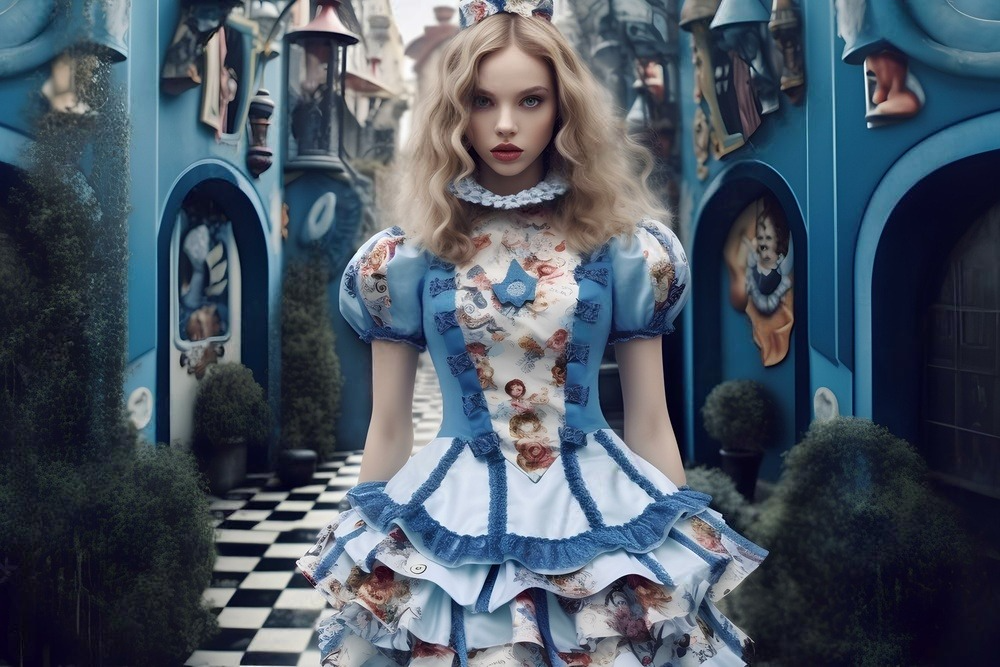
Lolita Fashion in Movies and Television
In the realm of cinema and television, Lolita’s fashion style often serves as a visual spectacle, adding depth and intrigue to characters and storylines. Films such as “Kamikaze Girls” (2004) and “The Great Lolita Battle” (2010) prominently feature characters adorned in Lolita attire, showcasing the style’s whimsical charm and subversive appeal. These portrayals not only celebrate the creativity and individuality of Lolita’s fashion style but also shed light on its cultural significance within Japanese society.
Lolita Fashion in Music Videos
Music videos provide another platform for the expression and celebration of Lolita’s fashion style. Artists like Kyary Pamyu Pamyu, known for her eccentric style and catchy tunes, often incorporate elements of Lolita fashion into their music videos, creating visually stunning and memorable experiences for viewers. The playful and surreal nature of Lolita’s fashion style complements the whimsical themes found in many music videos, making it a natural fit for artists looking to push creative boundaries and captivate audiences.
Lolita Fashion in Literature and Art
Literature and art have long been influenced by the beauty and elegance of Lolita fashion. In novels such as “Kamikaze Girls” by Novala Takemoto and “Alice in Wonderland” by Lewis Carroll, characters don Lolita-inspired outfits that symbolize rebellion, creativity, and self-expression. Likewise, artists and illustrators often draw inspiration from Lolita fashion, incorporating its intricate designs and whimsical motifs into their works of art. Whether in the pages of a book or on the canvas of a painting, Lolita fashion continues to inspire and captivate audiences with its timeless allure.
Lolita Fashion in Pop Culture
Beyond movies, television, music, literature, and art, Lolita’s fashion style permeates various aspects of pop culture, from fashion magazines and runway shows to cosplay events and social media platforms. Enthusiasts around the world celebrate and showcase their love for Lolita fashion through blogs, vlogs, and online communities, creating a vibrant and inclusive space for creative expression and camaraderie. With its growing visibility and influence, Lolita’s fashion style continues to shape and redefine the landscape of popular culture, inspiring individuals to embrace their unique sense of style and creativity.
Spotlight on Lolita Fashion Brands and Designers
The Lolita fashion style, with its ornate designs and whimsical allure, has captivated countless talented designers and brands worldwide. From renowned labels to independent creators, the Lolita fashion landscape is a vibrant tapestry of creativity and innovation.
Angelic Pretty
One of the most iconic and recognizable names in Lolita fashion, Angelic Pretty is renowned for its dreamy, pastel-colored designs and whimsical motifs. Founded in 1979 in Japan, Angelic Pretty has become synonymous with the sweet Lolita substyle, featuring delicate lace, bows, and playful prints inspired by fairy tales and fantasy. With a dedicated following both in Japan and abroad, Angelic Pretty continues to captivate enthusiasts with its enchanting collections and timeless elegance.
Baby, the Stars Shine Bright
Founded in 1988, Baby, the Stars Shine Bright is another influential brand in the world of Lolita fashion style. Known for its elegant and sophisticated designs, Baby, the Stars Shine Bright offers a diverse range of styles, from classic Lolita to gothic Lolita and everything in between. The brand’s attention to detail, quality craftsmanship, and romantic aesthetic have earned it a loyal following worldwide, making it a staple in the Lolita community for over three decades.
Metamorphose temps de fille
Founded in 1993, Metamorphose temps de fille is celebrated for its avant-garde approach to Lolita fashion style. The brand pushes boundaries with its bold designs, experimental silhouettes, and unconventional motifs, attracting those who seek to express their individuality and creativity through fashion. With its edgy yet whimsical aesthetic, Metamorphose Temps de Fille continues to captivate audiences with its innovative collections and fearless approach to design.
Moi-même-Moitié
Founded by renowned visual kei musician Mana in 1999, Moi-même-Moitié blends elements of gothic Lolita with dark elegance and sophistication. The brand’s signature aesthetic features rich fabrics, intricate lace, and ornate accessories, creating a sense of mystery and allure. Moi-même-Moitié’s unique blend of gothic aesthetics and Victorian-inspired elegance has earned it a dedicated following among those who appreciate its darkly romantic sensibilities.
Juliette and Justine
Founded in 2001, Juliette et Justine is known for its romantic and ethereal designs inspired by Victorian and Rococo fashion. With its emphasis on intricate details, luxurious fabrics, and vintage-inspired silhouettes, Juliette et Justine captures the essence of old-world elegance with a modern twist. The brand’s enchanting collections evoke a sense of nostalgia and whimsy, making it a favorite among lovers of classic Lolita fashion.
Independent Designers
In addition to established brands, the world of Lolita fashion style is also enriched by a vibrant community of independent designers and creators. These talented individuals bring a fresh perspective and unique vision to Lolita fashion style, offering handmade garments and accessories that showcase their creativity and craftsmanship. From small-scale artisans to emerging designers, independent creators play a vital role in shaping the diversity and innovation of the Lolita community.
Exploring Challenges and Criticisms Faced by Lolita Fashion
Despite its popularity and widespread admiration, Lolita’s fashion style is not immune to challenges and criticisms from both within and outside the community. From misconceptions and stereotypes to cultural appropriation and societal norms, the world of Lolita fashion faces its fair share of obstacles.

Misconceptions and Stereotypes
One of the most significant challenges faced by Lolita fashion is the prevalence of misconceptions and stereotypes surrounding the subculture. From outsiders who view Lolita’s fashion style as fetishistic or inappropriate to misconceptions about age, gender, and cultural appropriation, enthusiasts often find themselves having to defend and explain their love for the style. Educating others about the true essence of Lolita fashion style and dispelling common myths and stereotypes is an ongoing effort within the community.
Cultural Appropriation
Another criticism often leveled against Lolita fashion is the accusation of cultural appropriation, particularly regarding its use of Western Victorian and Rococo-inspired aesthetics. Critics argue that Lolita’s fashion style appropriates elements of historical European fashion without proper understanding or respect for its cultural significance. However, many enthusiasts emphasize the importance of cultural exchange and appreciation, pointing out that Lolita fashion has evolved into a distinct subculture with its own values, community, and interpretations.
Societal Norms and Expectations
Lolita fashion also challenges societal norms and expectations regarding gender, age, and self-expression. In many cultures, there are rigid expectations regarding how individuals should dress and present themselves, particularly when it comes to gender expression and modesty. Lolita’s fashion style, with its emphasis on elaborate dresses, petticoats, and accessories, challenges these norms by celebrating femininity, creativity, and individuality in all their forms.
Accessibility and Inclusivity
Accessibility and inclusivity are also significant challenges within the Lolita fashion community. While there is a diverse range of styles and substyles within Lolita fashion, finding clothing and accessories that cater to different body types, budgets, and cultural backgrounds can be challenging. Additionally, the perception of Lolita fashion as expensive and exclusive can deter individuals from exploring the style, leading to a lack of diversity within the community.
Online Harassment and Stigmatization
Much like other online communities, the Lolita fashion community is susceptible to harassment and prejudice. Enthusiasts, especially those with a prominent social media presence, may endure criticism, harassment, and even bullying from both external sources and within the community itself. This can significantly impact individuals’ mental health and well-being, hindering their involvement and engagement within the community.
Maintaining Authenticity in the World of Lolita Fashion
At its core, authenticity in Lolita fashion transcends mere adherence to aesthetic principles. It embodies a deep appreciation for the history, craftsmanship, and individual expression inherent in the style. Authentic Lolita fashion embraces creativity while honoring the roots and traditions that define it. It is not confined by rigid rules but thrives on personal interpretation and innovation.
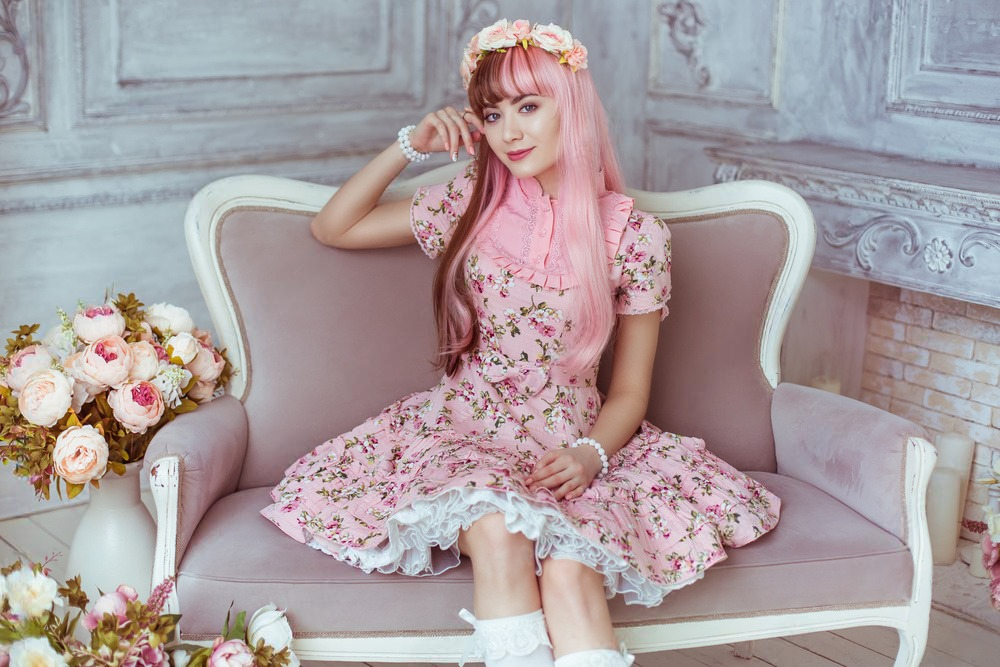
Embracing Personal Style
One of the most compelling aspects of Lolita’s fashion style is its versatility, allowing individuals to infuse their personalities into their attire. Whether drawn to sweet, classic, or gothic Lolita, each style offers a canvas for self-expression. Embracing personal style entails exploring different motifs, color palettes, and silhouettes that resonate with one’s identity. Lolita enthusiasts can create outfits that reflect their unique tastes and sensibilities by prioritizing individuality over conformity.
Respecting the Roots of Lolita Fashion
It’s essential to respect the origins and cultural significance of Lolita fashion style, acknowledging its Japanese heritage and historical influences. By understanding and honoring the roots of Lolita fashion, enthusiasts can contribute to a more inclusive and respectful community.
Supporting Independent Designers
In a market inundated with mass-produced replicas, supporting independent designers emerges as a cornerstone of authenticity in Lolita fashion style. Independent designers infuse their creations with passion, craftsmanship, and attention to detail, resulting in pieces that exude character and originality. By investing in items crafted by independent designers, Lolita enthusiasts not only acquire one-of-a-kind garments but also contribute to the sustainability of the community.
Avoiding Cultural Insensitivity
When incorporating elements of Lolita fashion into your wardrobe, it’s crucial to avoid cultural insensitivity and appropriation. Take the time to educate yourself about the cultural significance of different motifs, patterns, and accessories, and approach them with respect and appreciation.
Cultivating Community Connections
Authenticity in Lolita’s fashion style extends beyond personal style choices; it encompasses fostering genuine connections within the community. Whether through local meet-ups, online forums, or social media groups, engaging with fellow enthusiasts cultivates a sense of camaraderie and mutual appreciation. Sharing experiences, exchanging styling tips, and celebrating each other’s creativity strengthens the fabric of the Lolita community, reinforcing its authenticity and resilience.
Expressing Individuality Within the Style
While Lolita fashion has certain guidelines and aesthetics, it also allows for creativity and individual expression. Experiment with different colors, themes, and accessories to create unique and personalized looks that reflect your personality and interests.
Navigating Commercialization and Trends
As Lolita’s fashion style gains mainstream attention, navigating commercialization and trends poses a challenge to maintaining authenticity. While it is natural for styles to evolve, it is essential to discern between genuine innovation and fleeting fads. Staying true to the core principles of Lolita fashion style—elegance, modesty, and attention to detail—serves as a compass amidst shifting trends. By remaining discerning consumers and advocates for authenticity, Lolita enthusiasts can uphold the integrity of the fashion subculture.
Exploring the World of Lolita Fashion Beyond Clothing: Accessories, Lifestyle, and Community
Lolita fashion transcends mere clothing; it’s a lifestyle, a community, and a form of self-expression that extends far beyond the garments themselves. While elaborate dresses and intricate accessories are undoubtedly central to the aesthetic, delving into the broader aspects of Lolita culture reveals a rich tapestry of creativity, camaraderie, and individuality.
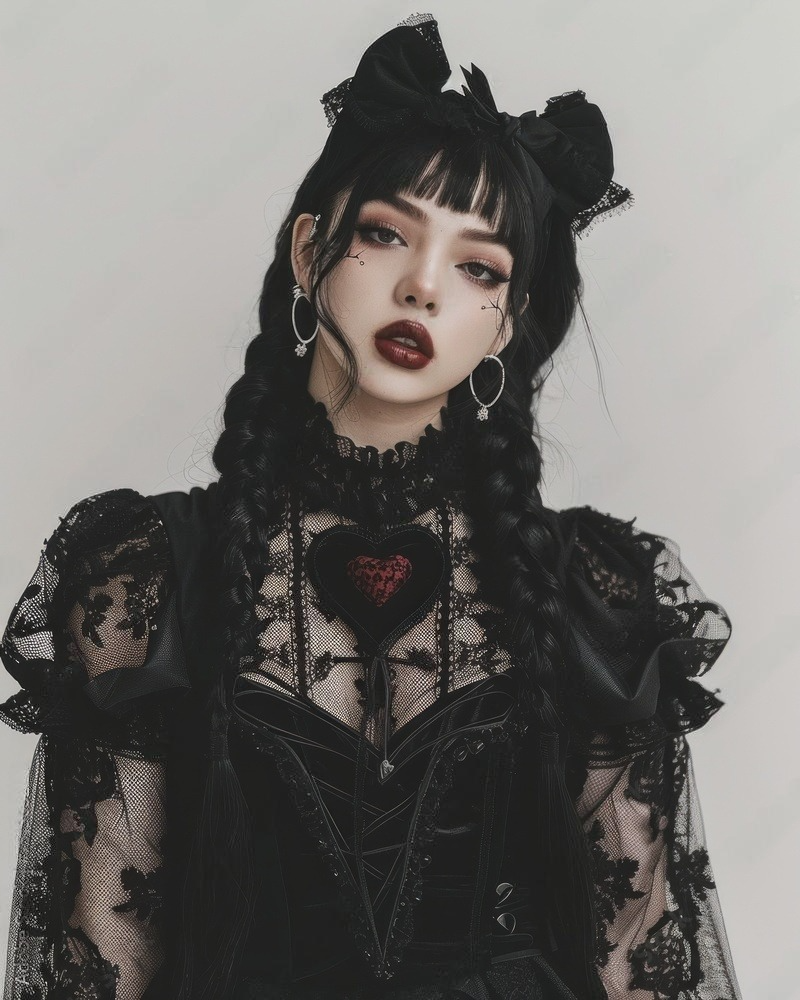
Accessories: The Finishing Touches
Accessories play a pivotal role in completing a Lolita ensemble, adding depth, texture, and personality to the overall look. From elaborate headpieces adorned with bows and lace to delicate parasols and elegant gloves, accessories serve as the finishing touches that elevate an outfit from mundane to magical. Lolita enthusiasts meticulously curate their accessories, often crafting or customizing pieces to perfectly complement their style and aesthetic preferences.
Lifestyle: Embracing Elegance and Etiquette
Beyond the realm of fashion, Lolita’s lifestyle encompasses a set of values and principles rooted in elegance, modesty, and etiquette. Many enthusiasts embrace these ideals not only in their attire but also in their daily lives, striving to embody the grace and refinement associated with the fashion subculture. From afternoon tea gatherings to elegant picnics in the park, Lolita lifestyle events provide opportunities for like-minded individuals to connect, socialize, and celebrate their shared passion for aesthetic beauty and cultural heritage.
Community: Building Bonds and Fostering Creativity
At the heart of Lolita’s fashion style lies a vibrant and supportive community united by a shared love for creativity and self-expression. Whether through local meet-ups, online forums, or social media groups, Lolita enthusiasts come together to share styling tips, exchange ideas, and celebrate each other’s accomplishments. The community serves as a source of inspiration, encouragement, and camaraderie, fostering a sense of belonging and connection that extends far beyond the realm of fashion.
Creativity: From DIY Projects to Artistic Expression
Creativity knows no bounds in Lolita fashion style, where enthusiasts are encouraged to express themselves through DIY projects, artistic endeavors, and collaborative ventures. From sewing their own garments and accessories to creating elaborate photo shoots and artwork inspired by the aesthetic, Lolita enthusiasts channel their creativity in myriad ways. Through their imaginative pursuits, they not only hone their craft but also contribute to the vibrant tapestry of Lolita culture, enriching the community with their unique talents and perspectives.
The Future of Lolita Fashion: Evolution, Innovation, and Cultural Resilience
Lolita fashion, with its enchanting blend of Victorian elegance and contemporary flair, has captivated fashion enthusiasts around the globe for decades. As the fashion landscape continues to evolve and diversify, the future of Lolita fashion style holds promise for further innovation, inclusivity, and cultural resilience. From embracing sustainable practices to fostering digital communities, the future of Lolita fashion is poised to usher in a new era of creativity and self-expression.
Sustainability: Nurturing the Environment and Community
In an era marked by growing environmental awareness, sustainability emerges as a key consideration in the future of Lolita fashion. From sourcing eco-friendly fabrics to promoting ethical production practices, enthusiasts and designers alike are increasingly embracing sustainable principles. By prioritizing environmental stewardship and social responsibility, the Lolita community can contribute to a more sustainable and equitable fashion industry while preserving the beauty and integrity of the fashion subculture for future generations.
Diversity and Inclusivity: Celebrating Individuality and Representation
The future of Lolita fashion holds promise for greater diversity and inclusivity, embracing a broader spectrum of styles, body types, and cultural influences. As the fashion subculture continues to evolve, there is a growing recognition of the importance of representation and inclusivity within the community. By celebrating individuality and embracing diverse perspectives, Lolita’s fashion style can become a more welcoming and inclusive space for enthusiasts from all walks of life, fostering a sense of belonging and empowerment among its diverse community members.
Digital Innovation: Navigating the Virtual Realm
In an increasingly digital world, the future of Lolita fashion is poised to embrace digital innovation, leveraging technology to connect, create, and inspire. From virtual fashion shows and online communities to digital pattern sharing and collaborative design platforms, technology offers new avenues for enthusiasts to engage with the fashion subculture and express their creativity. Lolita’s fashion style can transcend geographical boundaries and reach new audiences by embracing digital tools and platforms, fostering global connections and collaborations in the virtual realm.
Cultural Resilience: Honoring Tradition Amidst Change
Despite the ever-changing fashion landscape, the future of Lolita fashion remains rooted in the rich tradition and cultural heritage that define the subculture. While embracing innovation and evolution, enthusiasts continue to honor the timeless elegance and craftsmanship that have characterized Lolita fashion for generations. By preserving traditional techniques, motifs, and aesthetics, Lolita’s fashion style ensures that its cultural legacy endures, providing inspiration and empowerment for future generations of enthusiasts.
Lolita fashion continues to enchant and inspire individuals around the world, offering a whimsical escape from the mundane and a platform for self-expression. As the community evolves and embraces diversity, the future of Lolita fashion shines brightly, promising endless opportunities for creativity and camaraderie. Despite the challenges and criticisms it faces, Lolita’s fashion style continues to thrive as a vibrant and inclusive subculture that celebrates creativity, individuality, and self-expression.
By addressing misconceptions, promoting cultural exchange and appreciation, challenging societal norms, and fostering inclusivity and accessibility, the Lolita fashion community strives to create a welcoming and supportive environment for enthusiasts worldwide. As the community continues to evolve and grow, it remains committed to celebrating the beauty and diversity of Lolita fashion while advocating for acceptance and understanding in the wider world.

